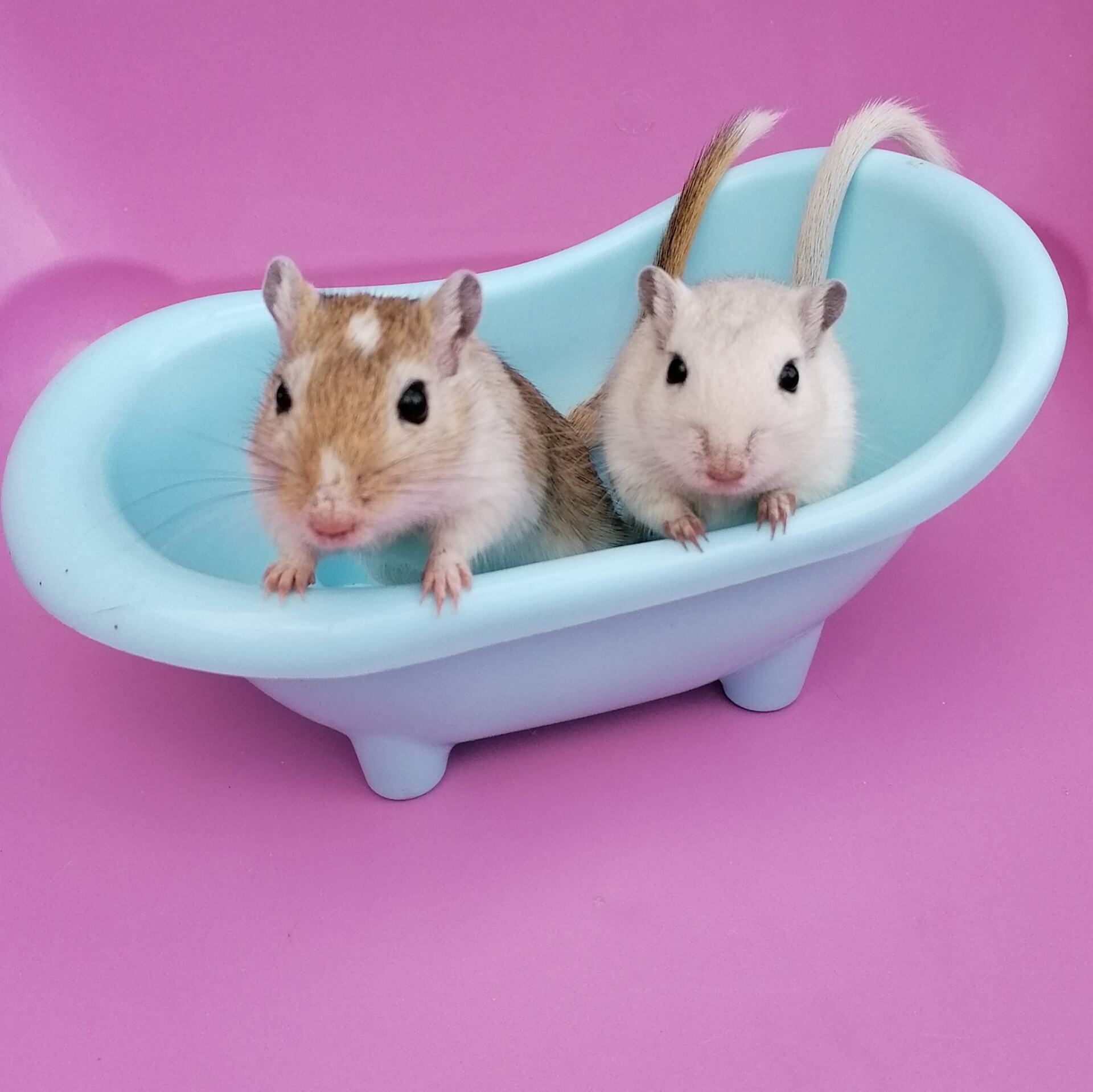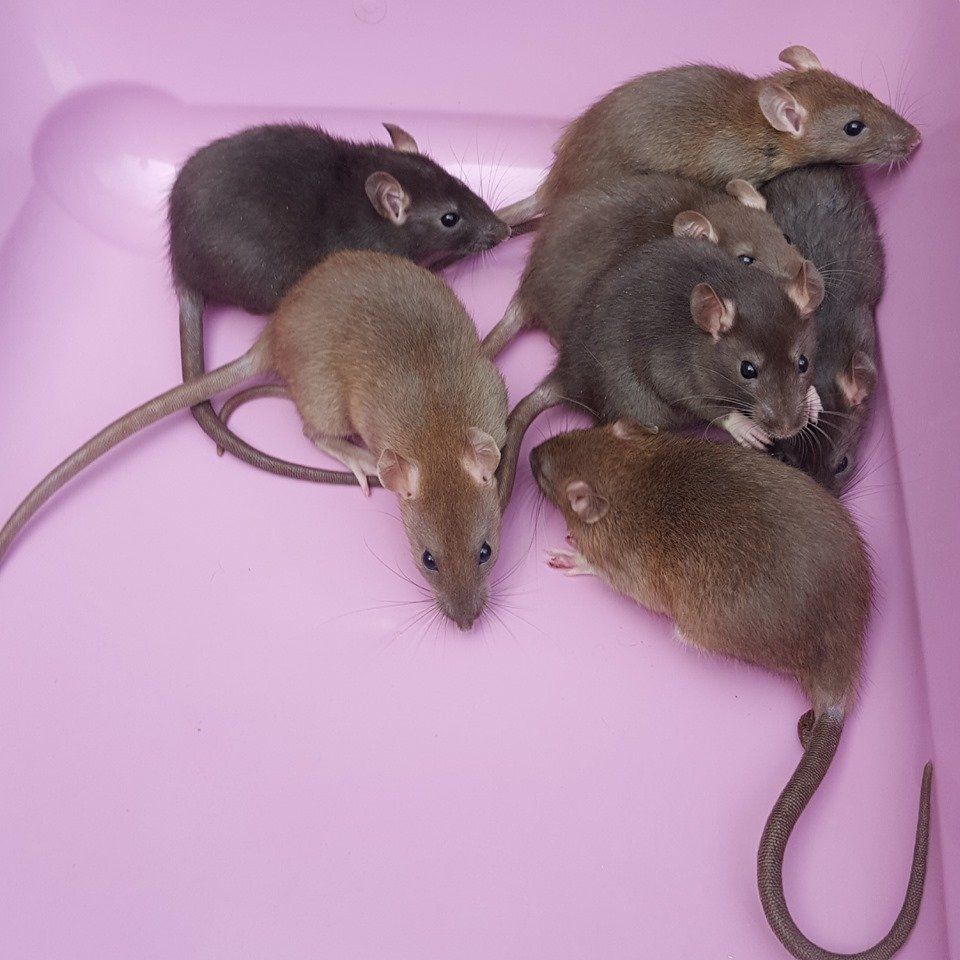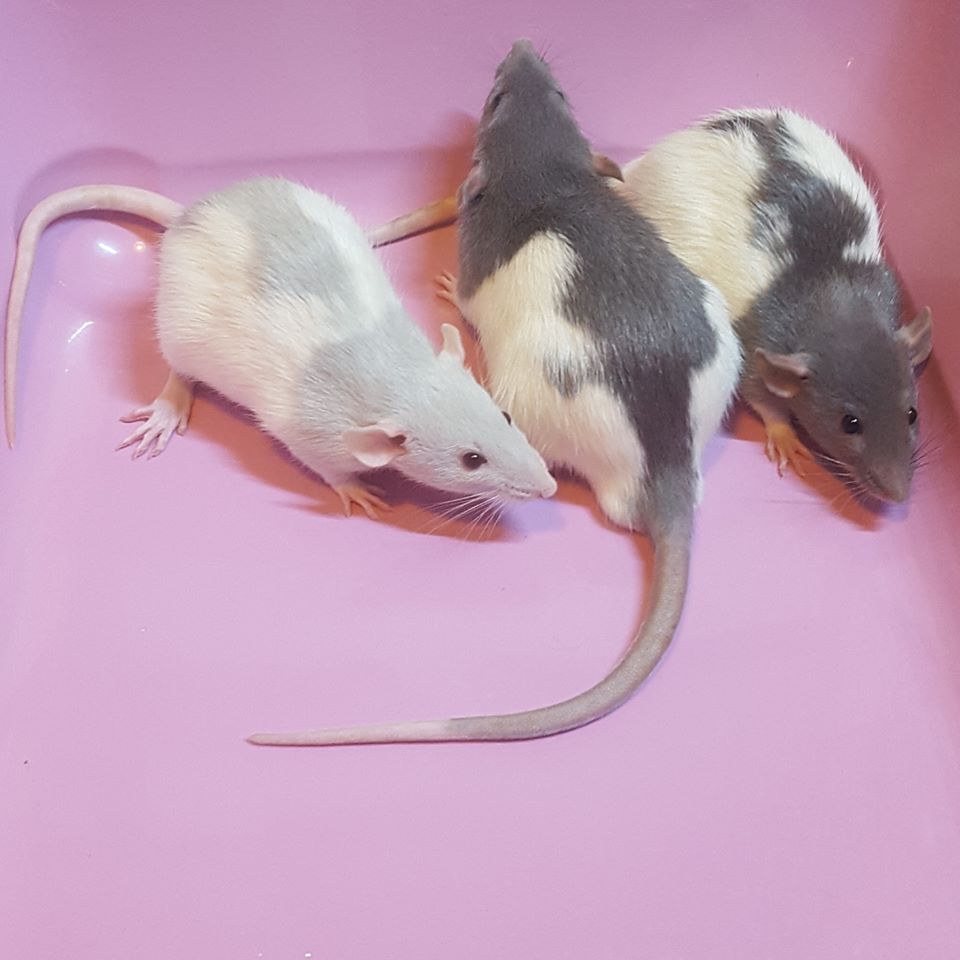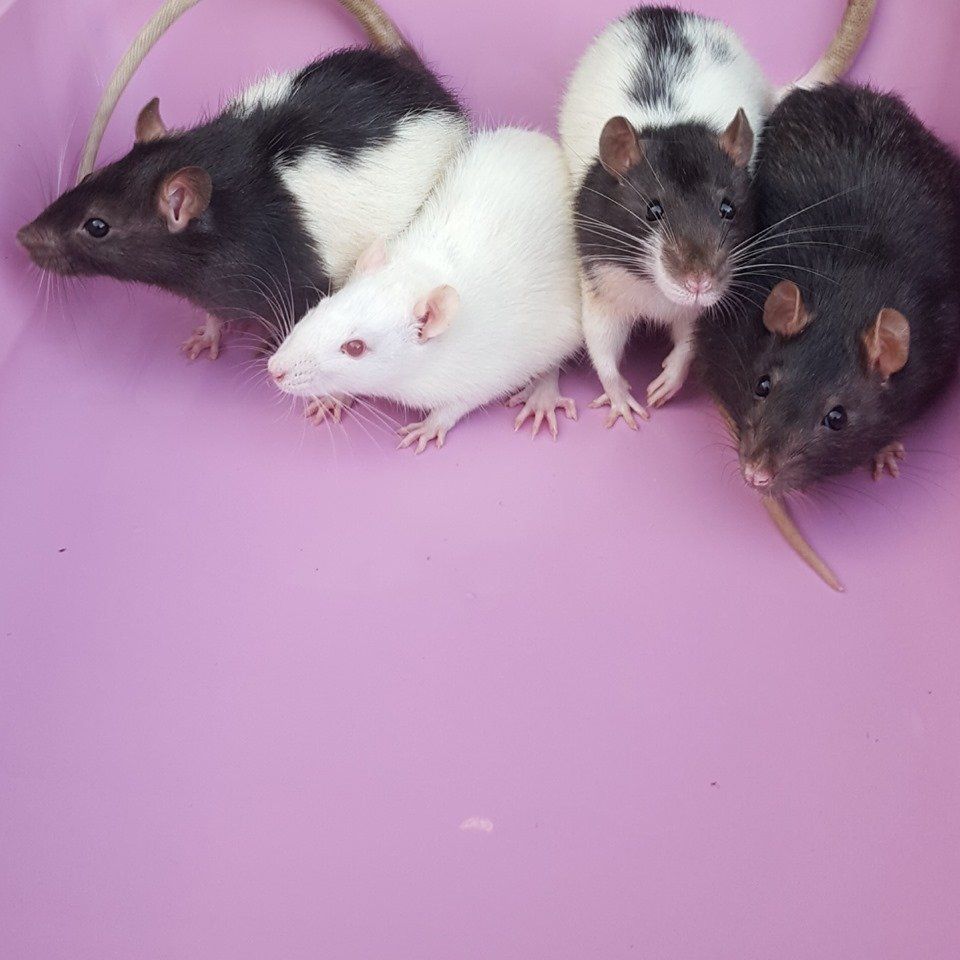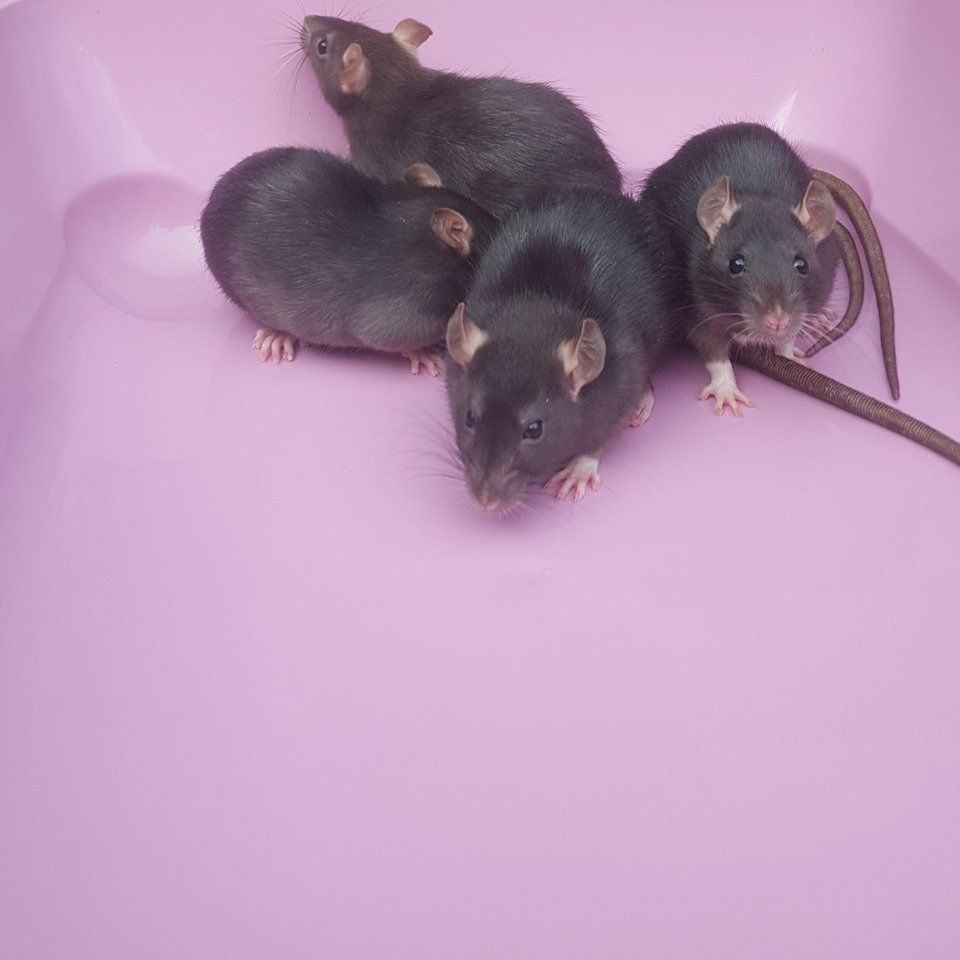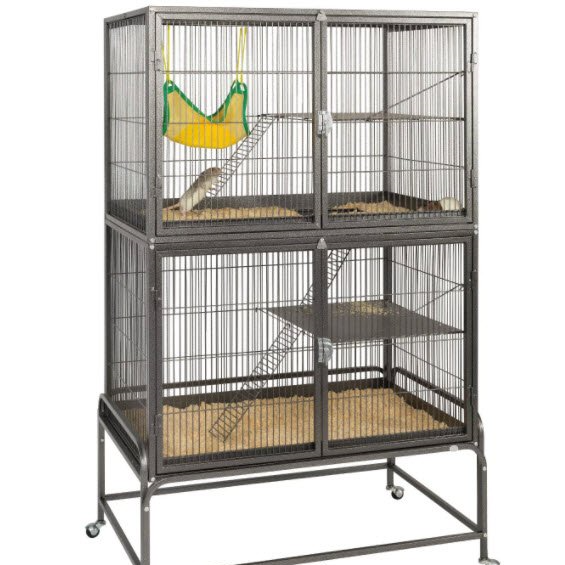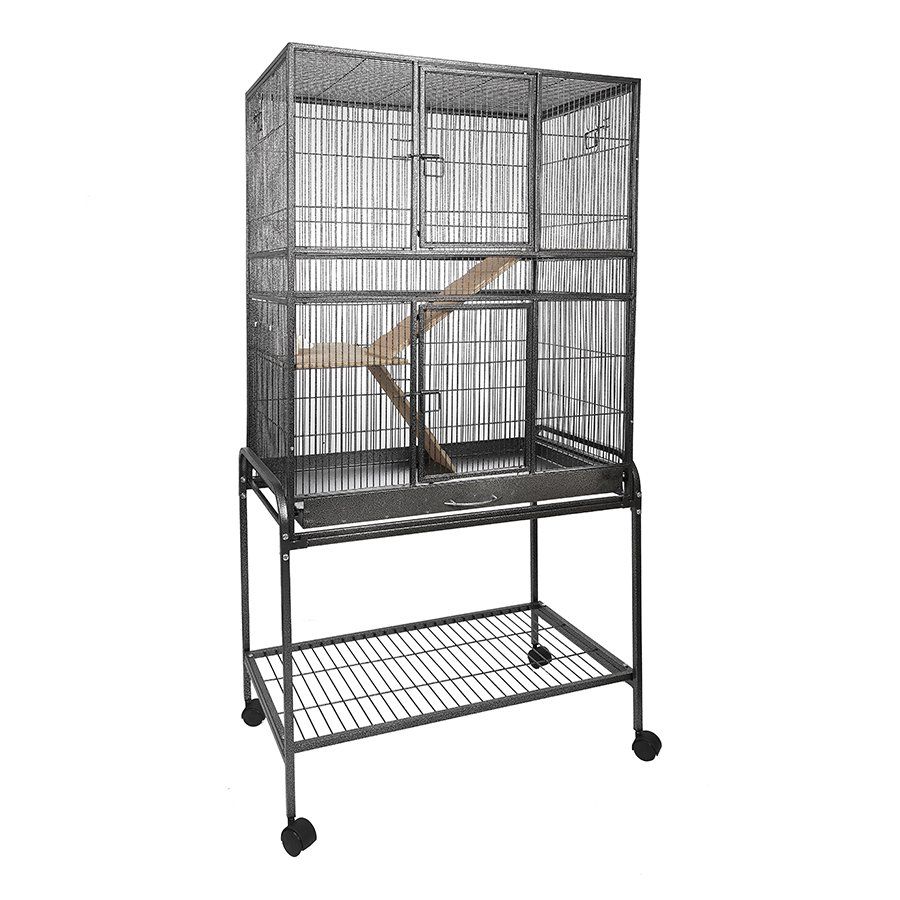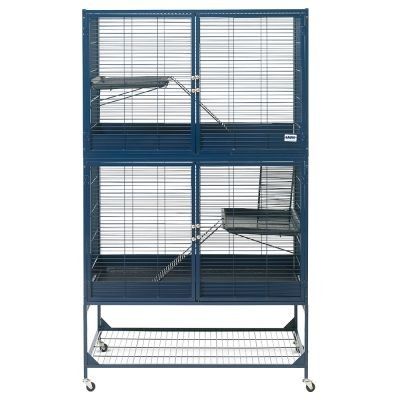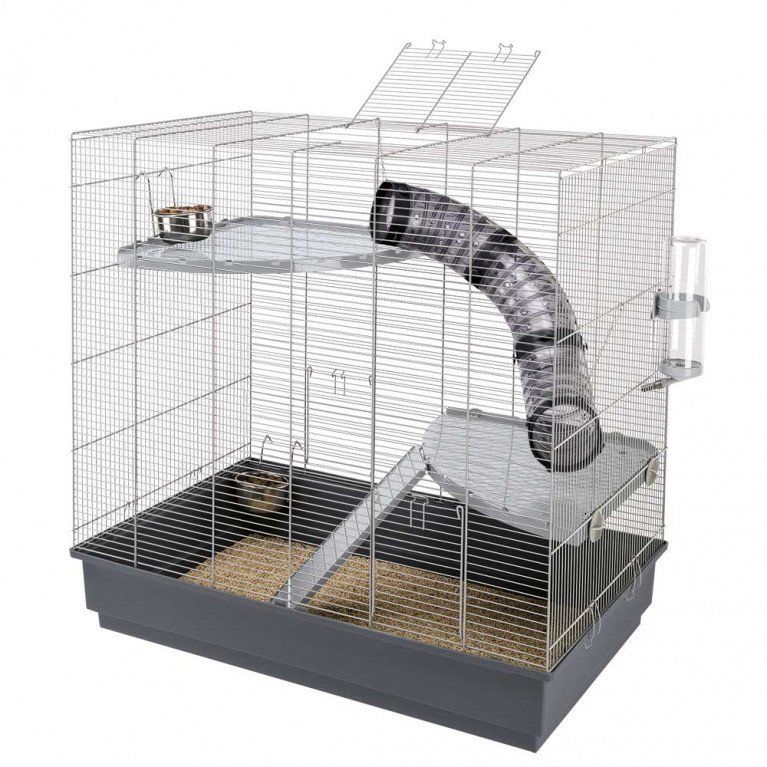Rat care
Suitable rat homes
Minimum size - 80 x 80 x 50cm for a pair/trio of rats.
Rats are very intelligent rodents who need lots of space and enrichment to keep them entertained. They love to climb too so need a large cage full of hammocks and ropes to enable them to live an enriched life.
Below are some cages we do recommend for rats.
Substrate and Bedding
For the main substrate, we recommend using Megazorb, shredded card, Auboise or similar products. We also add in cardboard tubes, boxes and egg boxes for them to chew and make nests in.
Rats often litter train themselves as they are naturally very clean animals. We use back 2 nature litter in a litter tray to enable this.
For nesting material you can use safebed, a shredded tissue like bedding. However, most rats really enjoy a nice fleece blanket to snuggle in. We also provide lots of fleece hammocks for them to sleep in.
We never use sawdust or wood shavings as they can cause respiratory issues in rats.
Feeding
You can buy mouse or rat food very easily from most pet shops. We avoid using bowls and instead scatter the mice food in their substrate. This is much more natural than a bowl and encourages them to forage providing added stimulation. We also add treats such as dried grass, meal worms and vegetables, though vegetables must be removed before they rot. You can feed many different treats such as cereal, dog biscuits and scrambled egg.
A wonderful site for rat food is - ratrations.co.uk
Toys
Rats love to climb. providing them with lots of rope toys is a great way to enable them to make use of their cage. They are also very intelligent. Hiding food in boxes or tubes is a great way to provide them with enrichment. Some people allow rats to fish for peas! Provide a small bowl of water with some peas in it, rats will love the game of trying to catch the peas.
You can also provide a dig box for them. This can be with shredded card, paper or a suitable and safe soil.
Wheels can be used but not all rats will use them. Female rats tend to use wheels more than males. The wheel needs to be a good size to prevent their back arching too much and the wheel needs to be solid. Wheels with gaps in them (typically metal wheels) can lead to tails getting caught.
Rats living together
Rats are very sociable and are best kept with others. We believe all rats should have at least one other rat to live with.
Rats can be kept in same sex groups with usually no problems. Males can also be neutered to join females. Some males may not accept other males. However, once neutered this usually changes and they become much more willing to accept new friends.
Introducing rats together
We have completed many rat introductions here. We always use the carrier method.
Rats must be introduced on a neutral territory. A small tank or carrier with very minimal but fresh substrate. Do not add any toys at this point, just some scattered food.
The carrier or cage must be small enough to prevent them from chasing one another. This should help encourage them to snuggle with one another.
Rats can be vocal with one another and do squabble, this is normal. Allow them to interact and only separate if blood is drawn.
Monitor them for a few hours and is they all seem relaxed (ideally all huddled together), you can add a house for them to hide in. This can help with them cuddling up and exchanging scent.
We advise to leave them in a small space overnight, then move them to their cage the next morning. The cage must be clean, with no smell of any other rats. Avoid adding toys for a few days and scatter feed to prevent arguments over a bowl.
